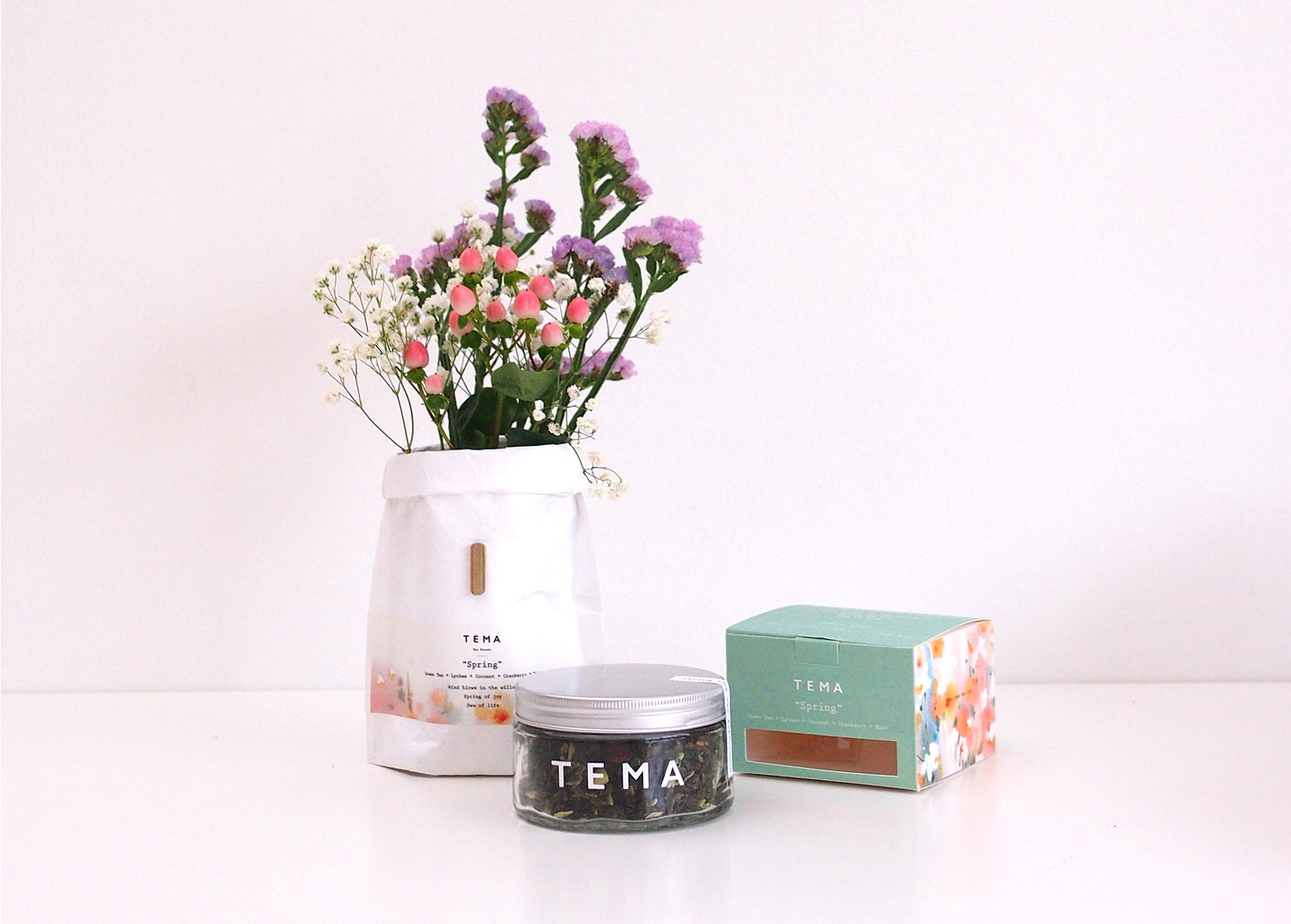
I remember in high school, our science teacher would always give us projects using the ‘PHEOC’ steps: Problem, Hypothesis, Experiment, Observation, and Conclusion. Never in my wildest imagination, I would ever use this again in my adult life.
Now, before we dissect the Problem, I would like to give you a glimpse on how and why is this important for us.
TEMA has been around for a year as of this month (yay!). Since the beginning, we aim to be a brand that is sustainable, environmentally-friendly and produce locally. Being an UKM (Usaha Kecil Menengah) and a new player in the tea industry, we realized there are a lot of challenges to achieving these 3 goals. They range from high cost, lack of suppliers, low market awareness, our own capacity, minimum quantity orders, etc - you name it! Out of all the packaging options that were available to us, glass jar was the winner. It is reusable, looks pretty, available, and affordable.
Now the Problem.
Problem:
- Jar breaks, and indeed it has happened many times during shipment (We are truly sorry if this has happened to you).
- How many jars can a household have until they reach the maximum amount and start throwing it away? I would assume not that much.
- Stick with our aim on being sustainable, environmental friendly, and produce locally.
- Low market awareness on sustainability in Indonesia (in other words, not a lot of Indonesian people realize on how product packaging really impacts our life now and the future).
Quite a lot of problems isn’t it…
Hypothesis:
We can only tackle these issues with the help of experts who truly know the ins and outs of packaging in Indonesia. Thankfully we met Arunika. A gang of cool and super smart ladies that helped to design our new packaging. What do we need? A packaging that is sustainable, environmentally-friendly, and locally produced.
Experiment:

This packaging uses 3 main materials.
- Fiber HDPE
- Bamboo
- Elastic rope
What is Fiber HDPE?
“High-Density Polyethylene, usually shortened to HDPE or PEHD, is a plastic polymer with flexible properties which make it ideal for a wide range of applications.
HDPE is accepted at most recycling centres in the world, as it is one of the easiest plastic polymers to recycle. Most recycling companies will collect HDPE products and take these to large facilities to be processed.
First, the plastic is sorted and cleaned, to remove any unwanted debris. The plastic then needs to homogenised, so that only HDPE will be processed. If there are other plastic polymers in the batch, this can ruin the recycled end-product .”
(G.P., Thomas)
Tema and Arunika went back and forth in discussing the pros and cons on using fiber HDPE as our main material. Yes, it is still plastic, however, it is easily recyclable and the best part is, Arunika had perfected the design to make it reusable for your household. So we went with it!

Once you are done with the tea, don’t throw the packaging just yet. You can use it as a flower pot, toothbrush container, keep coins, hold your pens and pencils, and many more. We can take baby steps to care for our world by slowly creating sustainable habits in our life.
Being sustainable does not mean we have to take extreme measures. The next step would be to start thinking on how to reuse other goods that you have in your household and how you manage your waste. For us sustainability is a journey, and we hope we can keep going forward with you.
Observation & Conclusion:
Now, we will have to see the effectiveness of our new packaging. Please send us inputs or comments about this. We are super excited about this packaging as we have put a lot of thought into this. We hope that now you understand us better, but more importantly how packaging can impact the world, and how small acts can make the world a better place.
--
Who is Arunika?
LitterAlly is a product and waste material research division of ARUNIKA Design Studio. With design, we endeavor to solve social and environmental issues the world is facing today, starting with local environment. We create lifestyle and home decoration products using waste and environmentally friendly materials as our main ingredient. Our goal is to produce less waste and starts the regeneration cycle of the waste to create more product. Moreover, LitterAlly also accepts custom design product using leftover material as the main ingredient.
Bibliography:
G.P., Thomas. “Recycling of High-Density Polyethylene (HDPE or PEHD).” AZoCleantech.com, AZoCleantech.com, 24 July 2017, www.azocleantech.com/article.aspx?ArticleID=255.
